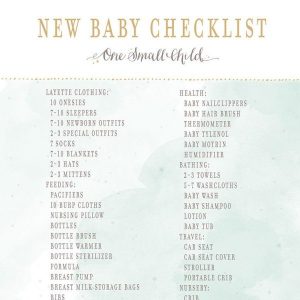

It’s a good idea to talk to other parents about what they’ve found useful. Other ways to save include buying only what you really need.

You can save money by buying or accepting second-hand or pre-loved toys, clothes and some furniture like dressers. It’s safer for babies to play on a playmat or blanket on the floor. For example, they can put babies in reach of many safety hazards. There are dangers associated with baby walkers. It can also get into your baby’s genitals and cause harm.ĭon’t use baby walkers. Talcum powder isn’t recommended because it has fine particles that your baby might breathe in. individual disposable nappy bags (or old plastic bags) – handy for when you’re out with your baby.a baby bath and some soft towels for wrapping and drying your baby after each bath.Here are other items that might be helpful: Some equipment can be quite expensive, so it makes sense to decide based on what you think you’ll use, rather than on what advertisers or other people tell you.

A few baby wraps: muslin wraps are lighter and better for summer.Īfter you have these essentials, you might decide to do without or hold off on buying a lot of extras.Cardigans or jumpers: this will depend on the time of year and where you live.Baby jumpsuits and a selection of singlets or vests: 3-4 of these are good basics for dressing your newborn.Nursing bras and breast pads: you’ll need these if you’re breastfeeding.Extra-long and extra-thick maternity or sanitary pads: take plenty to the hospital, and have more ready for when you get home.A pram or stroller that meets either Australian Standard AS/NZS 2088:2013 or AS 2088:2022: this is a safe and convenient way for your baby to travel when you’re out and about.A breast pump for expressing milk: this might be handy if you’re breastfeeding and you plan to express.Bottles, teats and bottle-washing items: you’ll need these if you’re bottle-feeding.Nappies: even if you plan to use reusable nappies, it’s a good idea to have a few disposables on hand just in case.Some parents use a bassinette or crib for their baby in the first few months, but going straight to a full-size cot is a safe and cost-effective option. A cot that meets the Australian/New Zealand Standard AS/NZS 2172 and a firm, well-fitting mattress: these are essential for your baby’s sleep safety.It’s a good idea to have the car seat professionally fitted before your baby’s arrival. An approved rear-facing child car seat that meets the Australian/New Zealand Standard AS/NZS 1754: you’ll need this if you’re driving home from hospital.Here’s some baby equipment you’ll need to start with. The things your baby needs will change all the time, so the best approach might be to buy, borrow or hire things as you need them. Most of the things you need to do to make your home safe for your newborn are about knowing what to expect, rather than making major changes. A night light might be handy for night feeds. Pillows can give you extra support if you need it. You can feed your baby anywhere that you can relax and hold your baby comfortably.

And no matter where you bath your baby, always stay within arm’s reach of your baby. You can bath a newborn in the kitchen sink or laundry tub, so long as it’s safe and clean. And if you’re changing your baby on a bed or change table, remember to keep one hand on your baby at all times so that your baby can’t roll off. If you'd prefer to use a change table, you can find out about safe change tables in our article on safe baby furniture. But some parents do find it’s easier on their backs to change baby on a change table or bed. It’s safest to change your baby’s nappy on a mat on the floor so your baby can’t fall. But it’s best to adjust your baby’s clothing rather than heating or cooling the room. Turn off the appliance before putting your baby in the room. If you need to adjust the temperature of the room where your baby sleeps, use a heater or fan only when your baby isn’t in the room. These sleeping arrangements can reduce the risk of sudden unexpected death in infancy (SUDI). It’s safest for your baby to share a room with you, sleeping in a cot next to your bed, for the first year of life or at least the first 6 months. Getting your home ready can be a good way to prepare yourself, your partner and your other children for your new baby’s arrival.


 0 kommentar(er)
0 kommentar(er)
